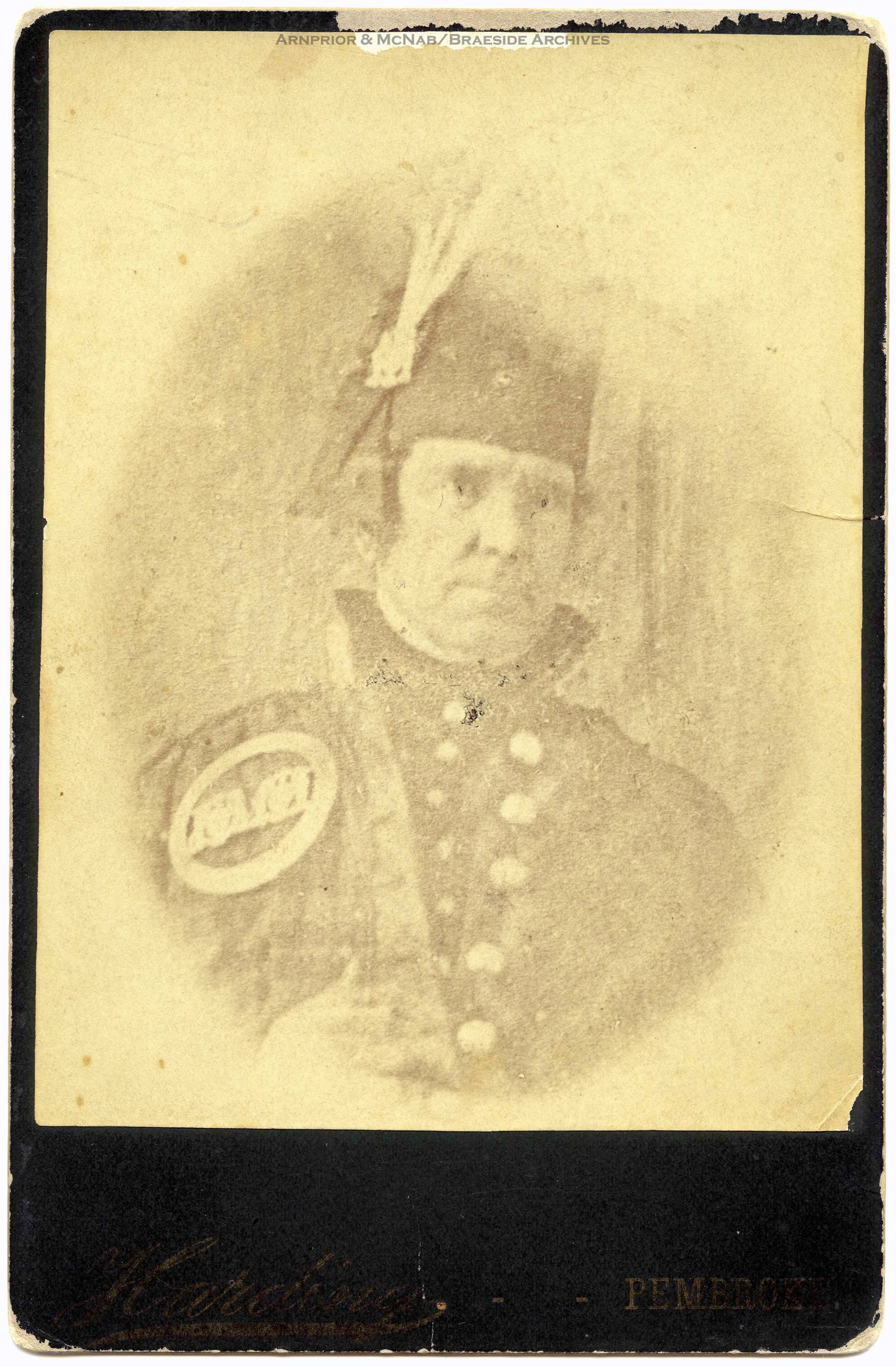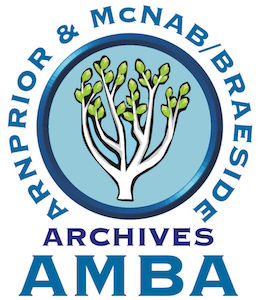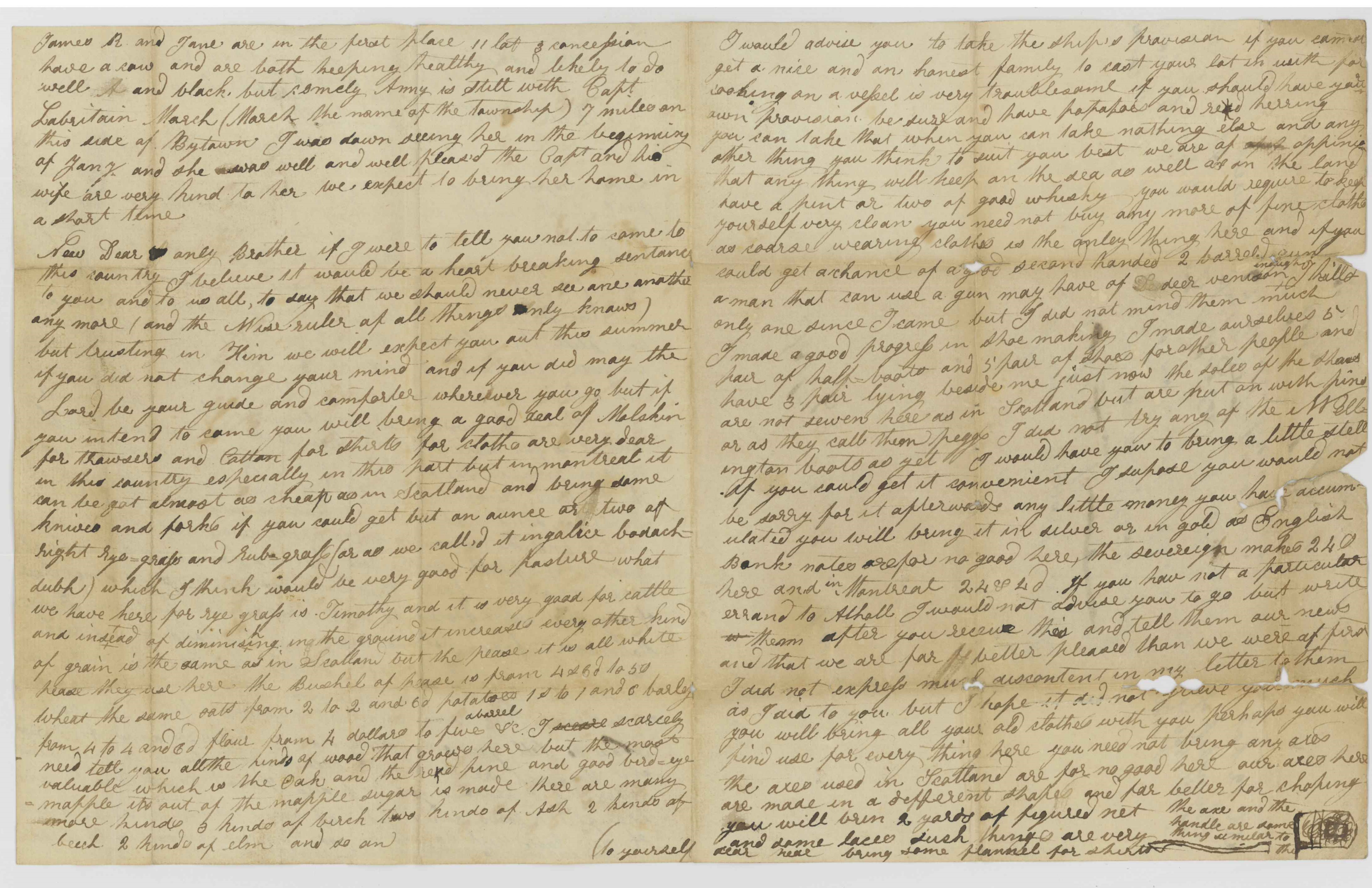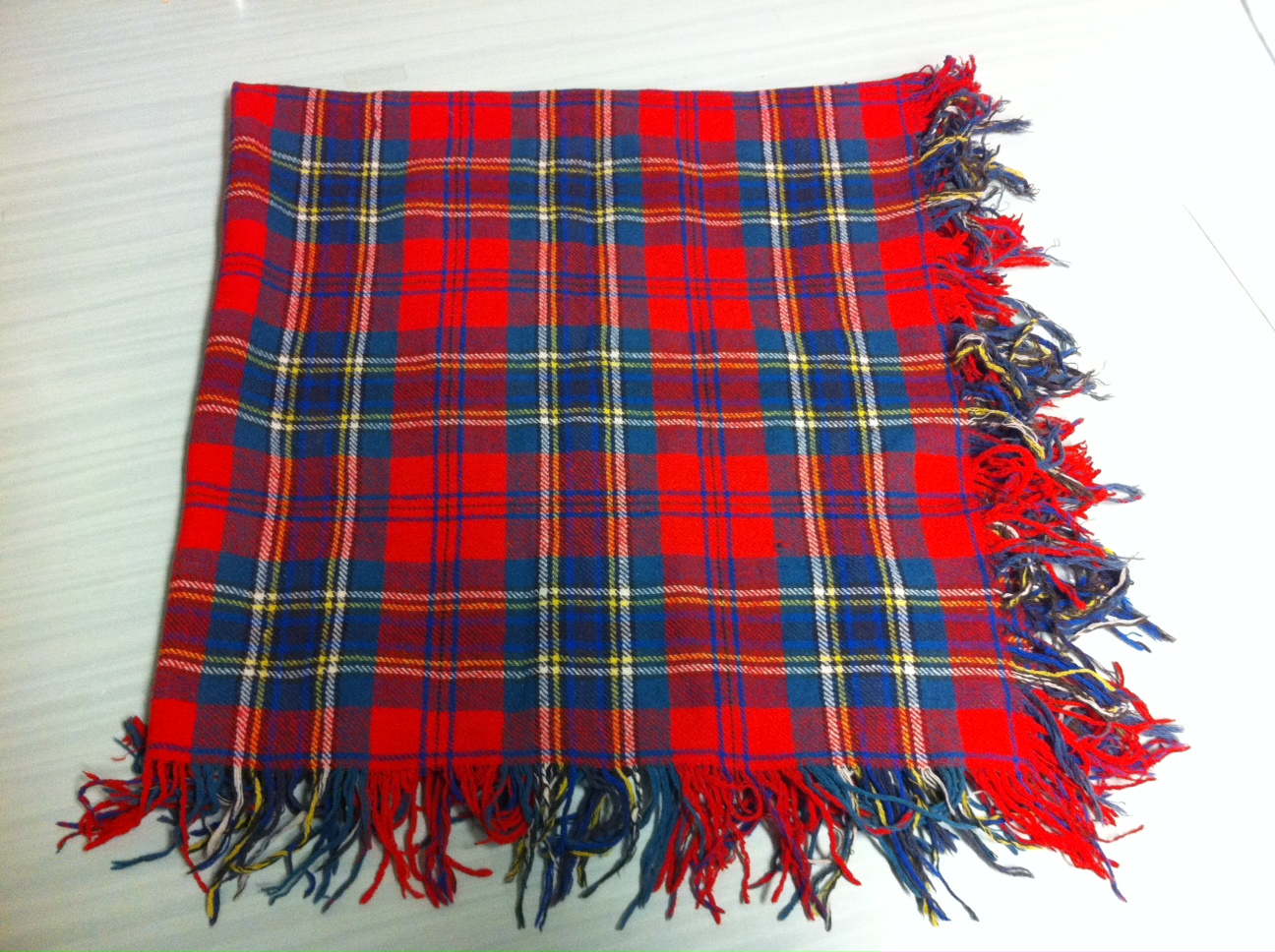150 Years of Living off the Land
The Immigrant Experience
The people of the Algonquin First Nation lived and hunted in the Ottawa Valley for thousands of years prior to the arrival of European settlers. They never entered into a formal treaty with the Crown and never ceded the land upon which McNab township now stands. Please see links to further information at the bottom of this page.
The earliest European squatters in McNab Township settled on government land with the intention of acquiring legal title before the Township was surveyed in the early 1820's. Eight of these settlers signed a bond with Chief Archibald McNab in Montreal in July 1825, years after they had started to work the land. They were Duncan Anderson, Duncan Campbell, Alexander Goodwin, Charles Goodwin, Alexander McDonnell, James McNee, Archibald Stewart, and John Taylor. They joined the group of 84 people who Chief McNab brought here in 1825 under a private immigration scheme. This undertaking was similar to those which brought other Scottish families to Perth and Johnstown District of Upper Canada in 1820-1821 through various emigration societies based in Glasgow. Unlike those settlers, the families bound for McNab Township signed an untenable agreement with the Laird to pay back the cost of their passage and an annual quit-rent in the form of a bushel of wheat or equivalent in flour for each cleared acre. They had no way of knowing that McNab did not actually own the land and that it would be almost impossible to meet their obligations under the agreement due to the harsh conditions of the land and the climate in Upper Canada.
The following list gives the names of the heads of families who agreed to McNab’s terms and conditions and sailed on the Niagara from Greenock, Scotland to make a new life here, forty two years before Confederation: James Carmichael, Donald Fisher, Peter Campbell, Peter Drummond, James Robertson, Alexander McNab, James McFarlane (of Kier), Duncan Campbell, James McDonald Donald McNaughton, John McDermid, John McIntyre, Peter McIntyre, Donald McIntyre, James McLaurin, Peter McMillan, James Storie (of Dumbarton), James McFarlane (of Creif), Alexander Miller, Malcolm McLaren, Colin McCaul. These families relied on each other to provide kinsman-ship and support through difficult times. Thousands of residents who currently live in McNab/Braeside Township descend from these original Scottish immigrants.
Later settlers to McNab Township include a substantial German population who immigrated from the eastern provinces of Prussia from the late 1850's - 1900. Many of these families settled in Clay Valley (formerly called German Settlement), Clay Bank and Mansfield. As the name for this area suggests, the soil is clay based which is relatively fertile because of the capacity of the soil to absorb important plant nutrients. Today, this area of the Township is farmed extensively.
Private letters that survive from the early 1800’s offer intimate details of how settlers coped with the challenges of daily life. In a typically Canadian way, an early settler by the name of Alexander Stewart began a letter to his brother in Edinburgh by telling him about the weather here, "the winter is long and cold in this country but it is far more pleasant than it is in Scotland for there is no rain here in the winter time but keen frost the most of the time between the 20th of Nov. till the beginning of March or a little after, it, at least it was the case this last winter and the snow is not entirely away yet this being the middle of April..." He also advised that they bring potatoes and herring and a pint or two of good whiskey as provisions for the journey from Scotland. Alexander Stewart was a shoe maker who settled on Lot 12 of the 7th Concession. The complete letter which was written with homemade ink is shown at right (see Looking Back ) with the transcription provided in the link below.
The following letter, by an unidentified writer was published in "Chamber’s Edinburgh Journal" in 1833. As the introduction states it gives "a graphic description of the trials which the early settlers endured during the regime of the "Old Chief." The letter was most likely written by Andrew Russell to his mother. Andrew Russell and his wife Isabella with their three children left Scotland in May 1832 and arrived in McNab Township in October 1832. The location of the farm would be lot 14, Concession 12 (near present day Braeside).
A description of the Township of McNab, Upper Canada, Jan. 13, 1833.
Further reading about the Algonquin First Nation:
Books
Hessel, Peter. McNab - The Township. Arnprior: Kichesippi Books, 1988.
Kruzich, Noreen. The Ancestors are Arranging Things: A Journey on the Algonquin Trail. Canada: Borealis Press, 2011.
Links
Algonquins of Pikwakanagan website
The Algonquin Way Cultural Centre

A rare cabinet portrait of Chief Archibald McNab by Harding of Pembroke, Ontario.
Obtained by Peter Hessel from Mrs. Alex Box
1994-0021-0022
For further reading about immigration and the development of the Township please refer to ‘McNab – The Township’ by Peter Hessel.
The Dictionary of Canadian Biography entry for McNab, Archibald, 17th Chief of Clan MACNAB gives a comprehensive account of his life.
Looking Back
Transcript of the above letter from Alexander Stewart to Allan Stewart April 13 1835
Note that the address was written on the back of the letter itself. The letter was returned to the sender because of insufficient postage.
1993-0005 Arnprior District Museum fonds
Mrs. Christian Campbell's tartan shawl was brought to McNab Township in 1825. It is carefully preserved as a family heirloom by the Robert Campbell family.
2012-0297 Robert Campbell fonds.
Genealogical chart provided by Mary M. Campbell.
This stone fence represents hours of hard manual work for the settlers who needed to clear and possibly drain the land for crops. As stated in 'Destination: Ottawa Valley' by Peter Hessel, "the reality was that the new immigrant would not be able to make a living on his land until he put in many years of back-breaking labour, clearing the bush, removing stumps and heavy rocks (these were gathered into stone fences which can still be seen alongside fields and in areas long abandoned as farmland).
1994-0021 Peter Hessel fonds





